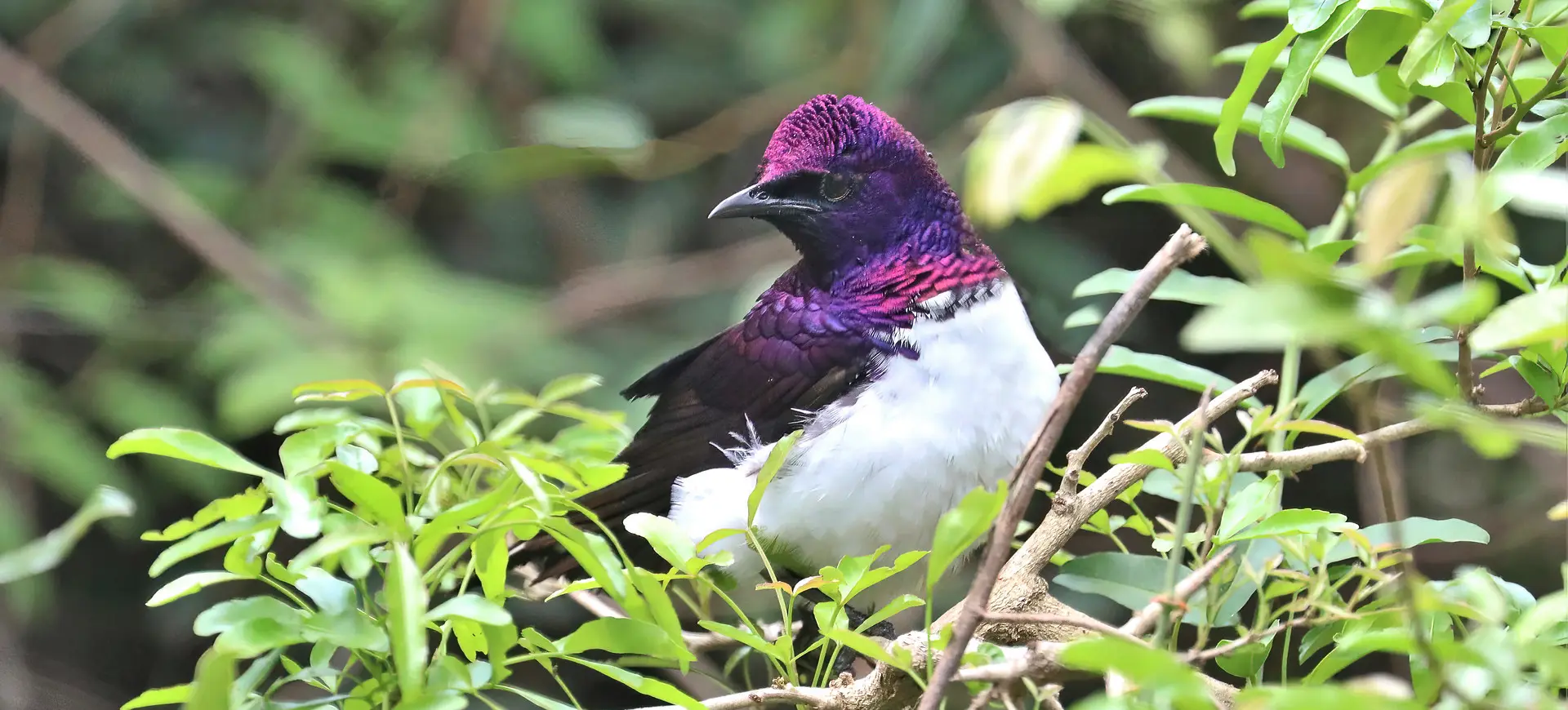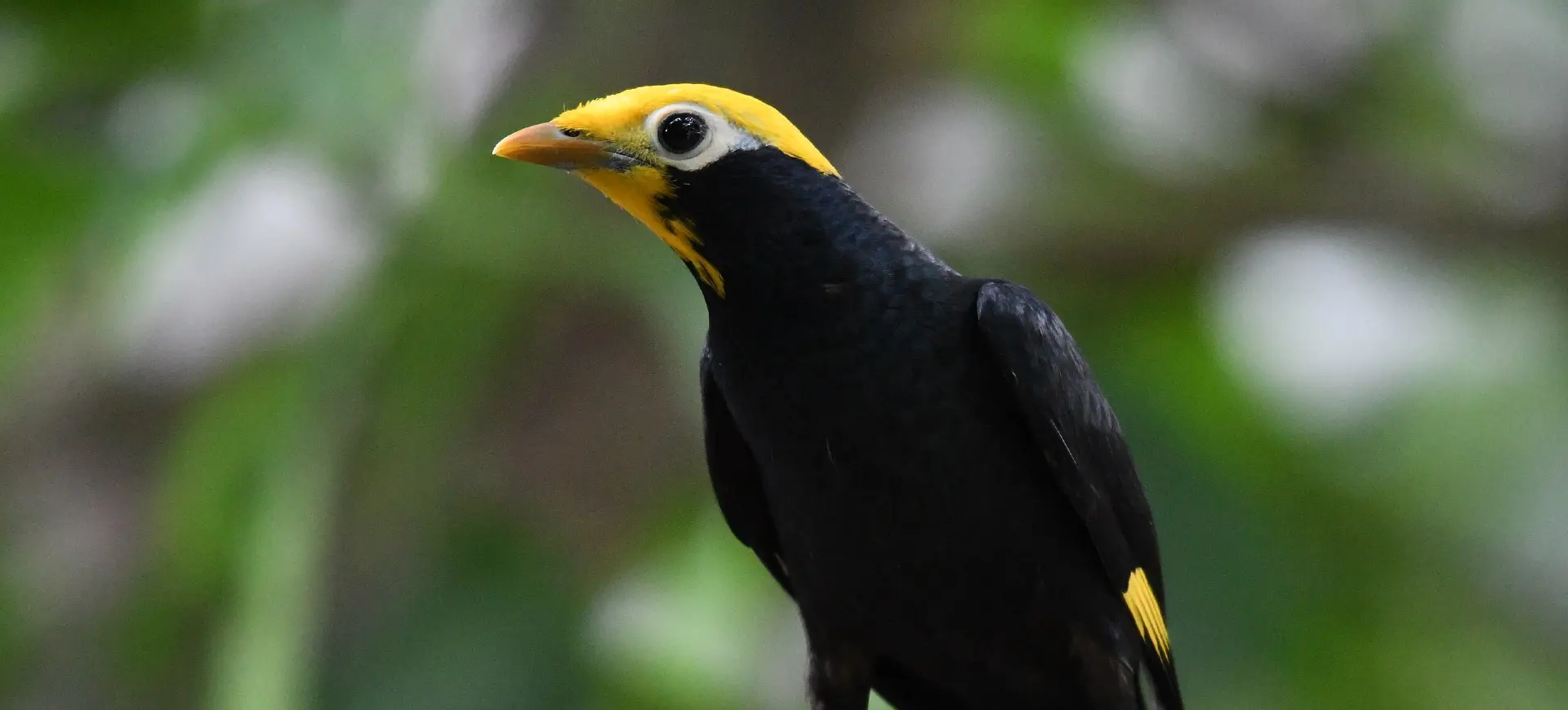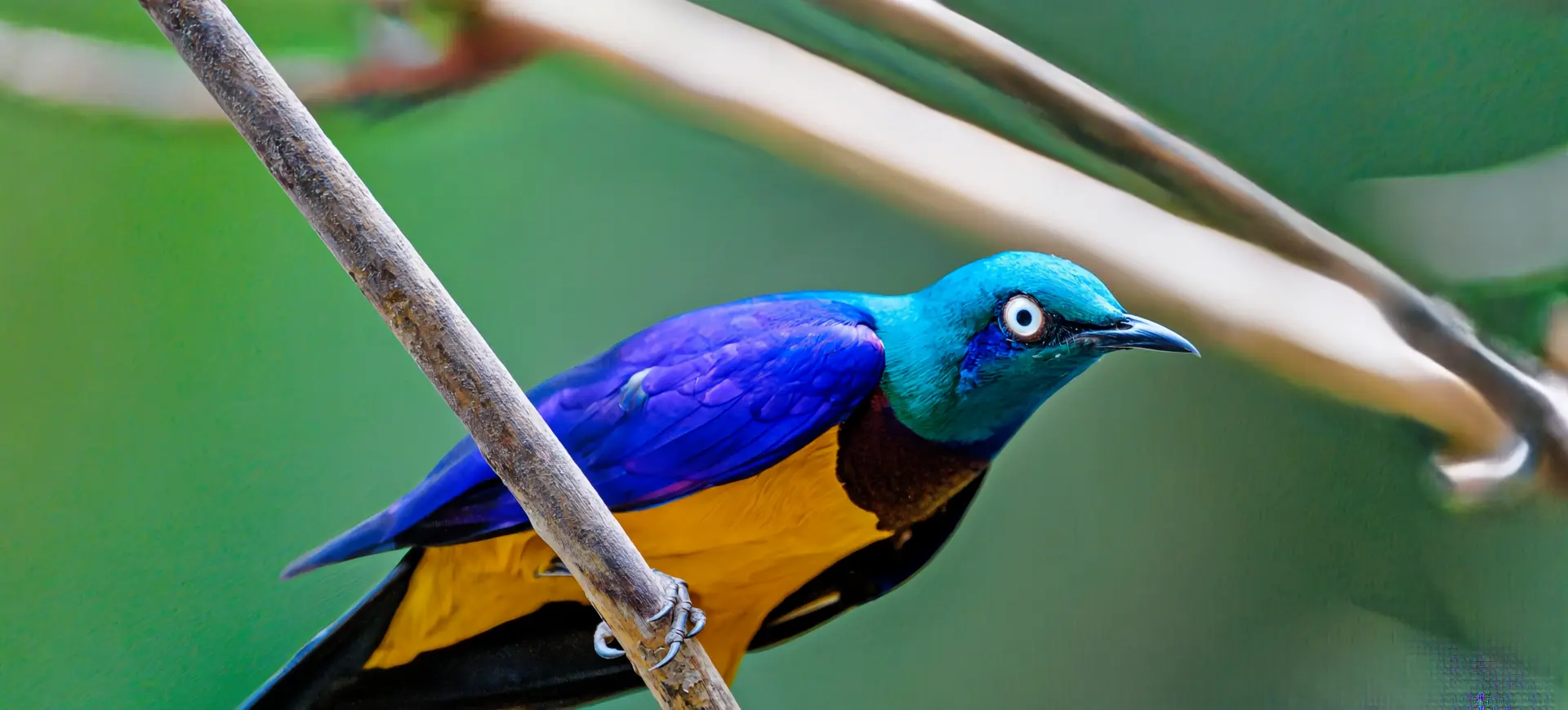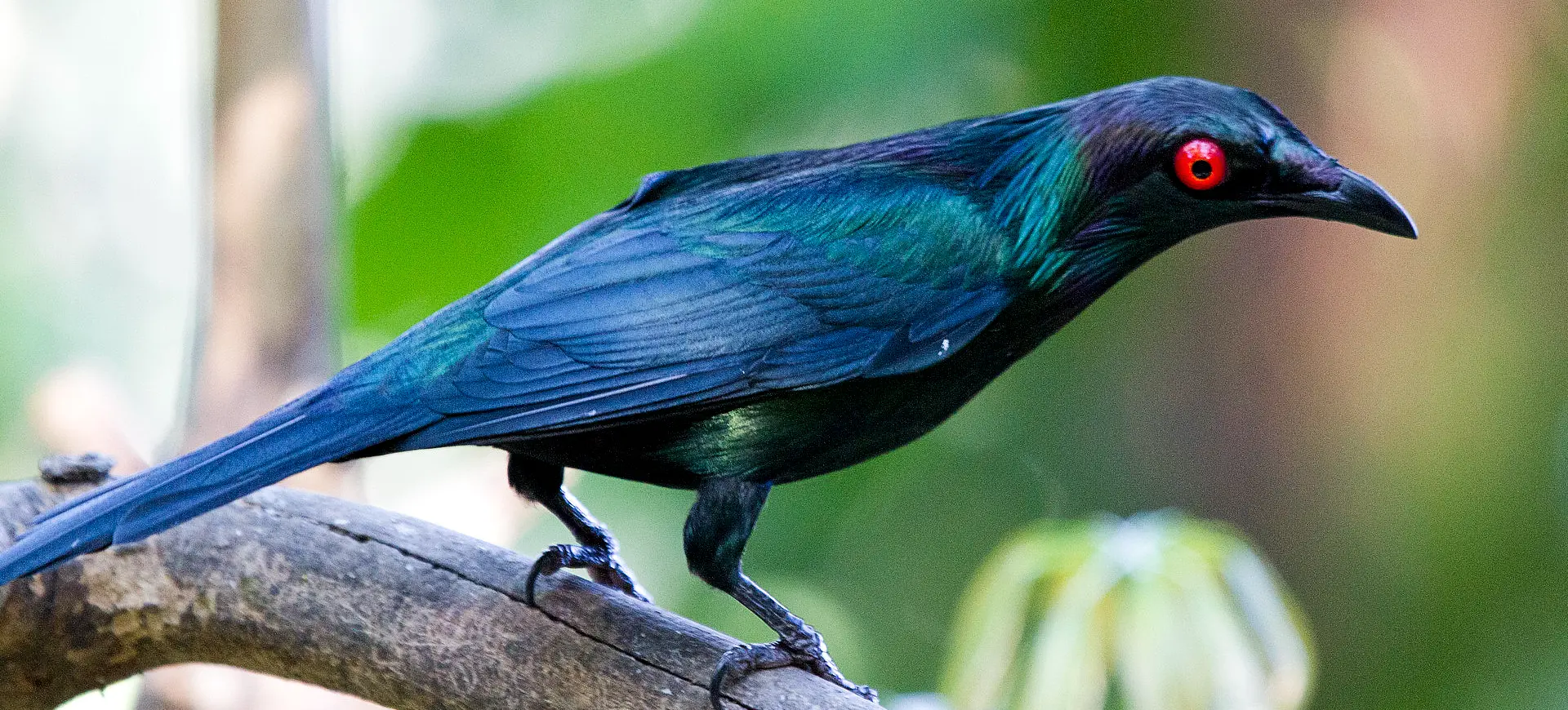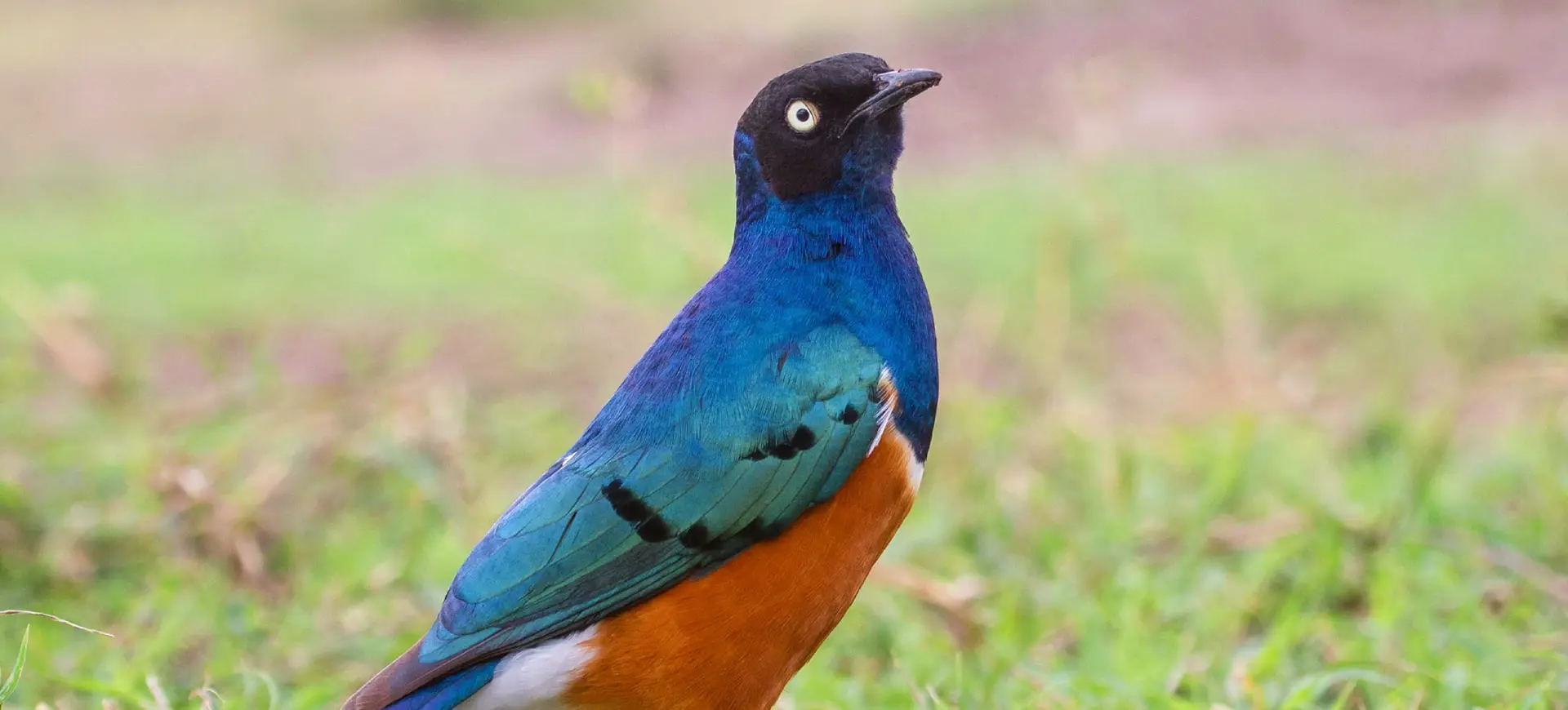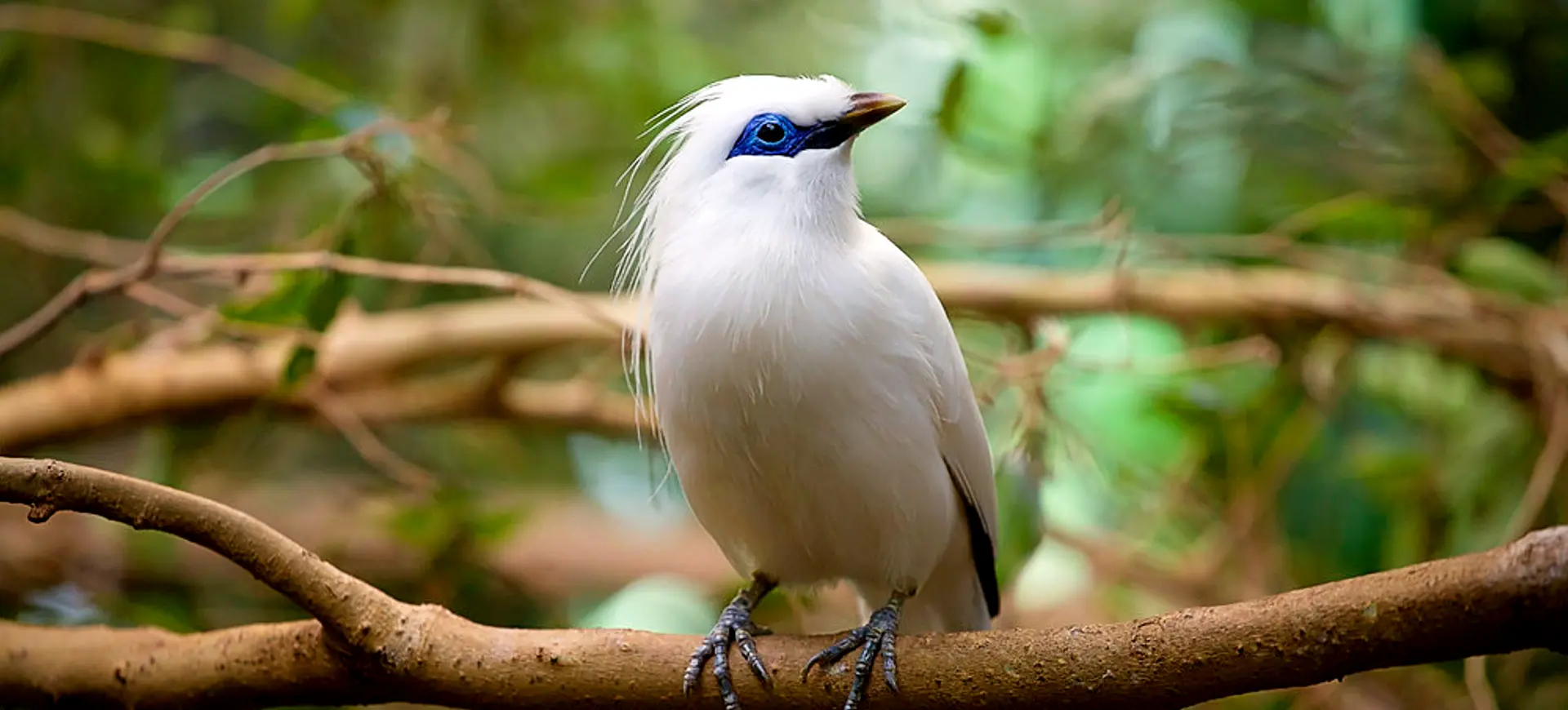Overview
The Emerald Starling (Lamprotornis iris) is a small, vibrant bird native to the forests of West Africa. Known for its striking iridescent plumage, the bird displays a dazzling array of green and blue colors that shimmer in the sunlight. The species is primarily found in lowland tropical rainforests, but it can also adapt to secondary forests and cultivated areas.
Females and males are similar in appearance, featuring metallic green plumage. The Emerald Starling is a social bird, often found in flocks that can number up to several dozen individuals. These flocks are particularly noticeable during the breeding season when the birds engage in communal displays to attract mates.
The diet of the Emerald Starling primarily consists of fruits and insects. They are known to forage in the forest canopy, plucking fruits directly from trees and capturing insects in flight. The species plays a role in seed dispersal, contributing to the health of its native ecosystems.
Taxonomy
Kingdom
Phylum
Class
Order
Family
Genus
Species
Type
Physical Description:
The Emerald Starling is a small bird, typically measuring between 19 to 21 centimeters in length. Both males and females display the characteristic iridescent green plumage, which can appear blue or even purple depending on the angle of the light. The bird’s eyes are dark, providing a striking contrast to its bright feathers.
The species has a strong, pointed beak adapted for plucking fruits and capturing insects. The legs and feet are dark gray, well-suited for perching in trees. The Emerald Starling is a light bird, usually weighing between 50 to 60 grams. Its wings are well-adapted for quick, agile flight, allowing it to navigate efficiently through its forested habitat.

Lifespan: Wild: ~8 years || Captivity: ~10 years

Weight: Male & Female: 2.8–3.5 oz (80–100 g)

Length: Male & Female: 7–8 inches (18–20 cm)

Wingspan: Male & Female: 12–14 inches (30–35 cm)

Top Speed: 20 mph (32 km/h)
Characteristic:
Native Habitat:
The Emerald Starling is native to West Africa, primarily inhabiting the lowland tropical rainforests of the region. These forests provide the dense canopy and abundant fruiting trees that the species relies on for food and shelter. They are also known to inhabit secondary forests and cultivated areas, demonstrating a degree of adaptability to human-altered landscapes.
The species prefers areas with high humidity and consistent rainfall, which supports the growth of the fruiting trees they rely on. While they are not considered a migratory species, Emerald Starlings may move locally in response to changes in food availability or environmental conditions.
Climate Zones:
Biomes:
Biogeographical Realms:
Continents:
Countries:
Diet:
Diet & Feeding Habits:
The Emerald Starling primarily feeds on fruits, making it predominantly frugivorous. It also consumes insects and nectar, diversifying its diet. The bird is an agile forager, often seen hopping from branch to branch in search of food. It uses its stout beak to pick fruits and insects from trees or the ground.
The bird is highly social and often feeds in small flocks. This communal behavior not only aids in foraging but also serves as a defense mechanism against predators. The Emerald Starling is known to be quite vocal during feeding, emitting a variety of calls that serve as communication among flock members.
Mating Behavior:
Mating Description:
The Emerald Starling is known for its communal displays during the breeding season. Flocks of these vibrant birds gather in specific areas, where males and females engage in elaborate displays to attract mates. These displays often involve synchronized flying, vocalizations, and feather puffing.
Once a pair is formed, they build a nest together, usually in a tree. The female typically lays two to three eggs, which both parents incubate. The eggs hatch after about two weeks, and the chicks are fed and cared for by both parents until they are ready to fledge, usually within three weeks of hatching.
Reproduction Season:
Birth Type:
Pregnancy Duration:
Female Name:
Male Name:
Baby Name:
Social Structure Description:
The Emerald Starling is a social bird, often found in flocks that can number up to several dozen individuals. These flocks are particularly noticeable during the breeding season when the birds engage in communal displays to attract mates. Despite their social nature, they are not particularly aggressive and tend to avoid conflicts with other bird species.
They communicate using a variety of vocalizations, including chirps and whistles. These sounds are used for various purposes, including attracting mates, signaling danger, and maintaining social bonds within the flock. The species is also known for its elaborate courtship displays, which include synchronized flying and feather puffing.
Groups:
Conservation Status:
Population Trend:
The Emerald Starling is currently listed as “Least Concern” by the IUCN, with a stable population trend. The species is relatively common in West Africa, although exact population numbers are unknown. They are primarily found in protected areas and wildlife reserves, which offer suitable habitats and abundant food sources.
Despite their stable status, the Emerald Starling faces challenges from habitat loss due to deforestation and agricultural expansion. However, their adaptability to different environments, including secondary forests and cultivated areas, has helped them maintain a stable population. Ongoing monitoring is essential to ensure the long-term survival of this vibrant species.
Population Threats:
The primary threats to the Emerald Starling are habitat loss and fragmentation due to deforestation and agricultural expansion. While they are adaptable and can thrive in various environments, losing primary forests poses a significant challenge. Additionally, they are sometimes captured for the pet trade, although this is less common.
Conservation efforts are focused on habitat preservation and reducing human impact. Protected areas like national parks and reserves are crucial for the species’ survival. Public awareness campaigns are also being used to educate local communities about the importance of conserving this vibrant bird species.
Conservation Efforts:
Conservation efforts for the Emerald Starling are primarily focused on habitat preservation. Several national parks and reserves in West Africa protect crucial habitats for this species. These protected areas are monitored to ensure the health and survival of Emerald Starling populations.
Ongoing research is being conducted to better understand the needs and behaviors of this species. This research is crucial for implementing effective conservation strategies, including habitat restoration and anti-poaching measures. Public awareness campaigns are also being used to educate local communities about conserving this unique species.
Additional Resources:
Fun Facts
- The Emerald Starling is known for its striking iridescent plumage.
- Both males and females display the characteristic metallic green coloration.
- They are social birds, often found in flocks.
- The species is native to the lowland tropical rainforests of West Africa.
- They play a role in seed dispersal in their native ecosystems.
- The Emerald Starling is an agile flier capable of quick maneuvers to capture insects.
- They have a monogamous mating system.
- The species is listed as “Least Concern” by the IUCN.
- They communicate using a variety of vocalizations.
- The Emerald Starling is adaptable and can thrive in various environments, including secondary forests and cultivated areas.




